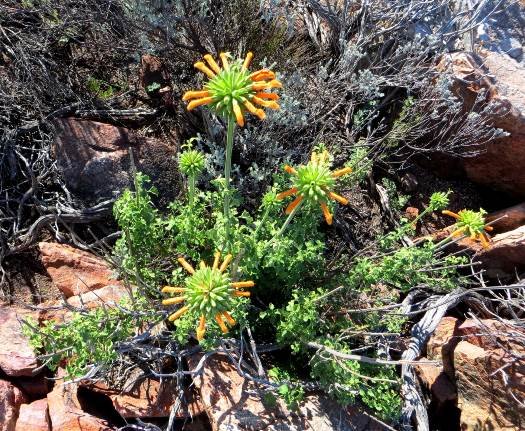Leonotis ocymifolia

Author: Ivan Lätti
Photographer: Louis Jordaan
Leonotis ocymifolia or the broad-leaved minaret flower is an erect, slender shrub growing to heights from around 2 m to 3 m. It branches from a thick, woody base. The plant shares an Afrikaans common name wildedagga with its relative, L. leonurus.
The broadly ovate to nearly rounded leaves are notably stalked. The margins are more scalloped than toothed. Midribs and lateral veins are sunken on the upper leaf surfaces. The upper surfaces are faintly hairy or glabrous, while the lower ones are silvery from a soft indumentum. The internodes on the stems are often long.
The specific name, ocymifolia, is derived from the name of another plant genus, Ocimum, on account of leaf similarity.
The velvety orange flowers grow in spaced, almost spherical whorls on erect stems. Both the calyx and corolla are two-lipped. Flowering happens from midsummer to early autumn or from spring to autumn, depending on the region within the large species distribution.
The distribution ranges across much of South Africa, the plants occurring in all provinces except KwaZulu-Natal and the Free State; also in East Africa, including Kenya.
The habitat is rocky slopes, grassland and forest margins. The species is not considered to be threatened in its habitat early in the twenty first century.
Klipdagga (stone cannabis) as the plant is also sometimes called, has proven itself a hardy garden subject. It is both drought-resistant and wind tolerant.
The reference to dagga disappoints users. The plant is neither narcotic nor viable as a tobacco substitute. There is, however, a remarkable list of medical conditions treated traditionally by using parts of this plant, as well as it having served as an emmenagogue (Curtis-Scott, et al, 2020; Vlok and Schutte-Vlok, 2015; Manning, 2009; iNaturalist; Wikipedia; http://pza.sanbi.org; http://redlist.sanbi.org).

